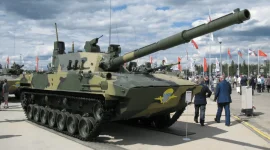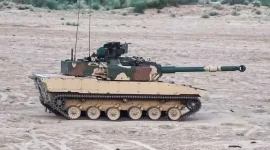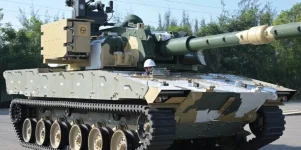- Views: 2K
- Replies: 12
India is taking a significant step towards self-reliance in its armoured vehicle capabilities, with plans to equip future batches of the Zorawar light tank with a domestically developed 800 horsepower (HP) engine and transmission.
This strategic move is set to replace the American-made Cummins engine currently used in the prototypes, thereby reducing dependency on foreign suppliers for critical defence technology.
The Zorawar light tank project was fast-tracked in response to operational challenges discovered during the 2020 border standoffs with China in the Galwan Valley.
The Indian Army found its heavier, primary battle tanks like the Russian-origin T-72 and T-90 were difficult to deploy and manoeuvre effectively in the rugged, high-altitude terrain of the Himalayas.
To address this gap, the 25-tonne Zorawar was developed by the Defence Research and Development Organisation (DRDO) and its partner, Larsen & Toubro (L&T).
The tank is named after General Zorawar Singh Kahluria, a 19th-century military commander renowned for his successful campaigns in Ladakh and Tibet.
The Indian Army has planned a phased induction for the Zorawar tank to balance immediate operational requirements with the long-term goal of full indigenisation. In the initial phase, an order for 54 tanks will be fulfilled by L&T at its Hazira facility.
These first units will retain the currently fitted 760 HP Cummins VTA903E-T760 engine to ensure they are delivered quickly for deployment along the Line of Actual Control (LAC). This batch is slated to undergo extensive user trials over the next 18 months, aiming for full service induction by 2027.
Following the initial deployment, subsequent and larger orders for 300-400 tanks will integrate the new indigenous powerpack.
This powertrain consists of an 800 HP engine—an enhanced version of a 600 HP engine jointly developed by DRDO's Combat Vehicles Research and Development Establishment (CVRDE) and Indian multinational Ashok Leyland—paired with a locally built automatic transmission.
This shift will significantly boost the tank's indigenous content and secure the domestic supply chain for its most vital component.
The new engine is specifically engineered for the extreme conditions of high-altitude warfare, featuring improved cold-start capabilities and greater fuel efficiency.
It is designed to provide the Zorawar with a superior power-to-weight ratio of over 30 HP/tonne, a key metric for agility in mountainous terrain.
This will enable the tank to reach speeds exceeding 70 km/h and give it a performance edge over platforms operated by adversaries, such as China's Type 15 (ZTQ-15) light tank.
Initially, India sought to procure an 800HP engine from the German company MTU, but the plan was halted by stringent European export control regulations.
As an interim solution, DRDO selected the American Cummins engine, which is also used in US military vehicles like the Bradley fighting vehicle.
While this decision allowed the project to proceed, it created a dependency that the new indigenous engine is intended to eliminate, reflecting lessons learned from supply chain issues in past defence projects.
Furthermore, the powerful 800HP engine provides a clear upgrade path for the Zorawar platform. According to DRDO, the tank's design can be scaled up to a 32-tonne variant equipped with a more formidable 120mm main gun.
The enhanced engine ensures that even this heavier version would maintain its mobility and combat effectiveness at altitudes above 15,000 feet, making the Zorawar a versatile and future-proof asset for the Indian Army.



